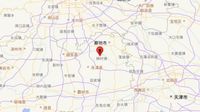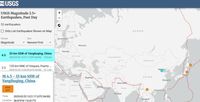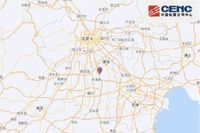On March 26, 2025, at 1:21 AM, a 4.2-magnitude earthquake struck Yongqing County in Langfang City, Hebei Province, China. This event, registered at a depth of 20 kilometers, sent tremors felt across the Beijing, Tianjin, and Hebei area.
Just minutes later, at 1:25 AM, a second quake with a magnitude of 2.9 occurred in the same region and at a depth of 15 kilometers. Fortunately, there have been no reports of injuries or significant damage to property following these seismic events.
The China Earthquake Administration reacted immediately, activating a Level 3 emergency response. Director Wang Kun and his team received timely updates from various earthquake monitoring bodies including the Hebei Provincial Bureau and municipal authorities in Beijing and Tianjin. They directed these agencies to enhance monitoring efforts, evaluate the situation, and report their findings promptly.
Seismographs indicated that the tremors were felt not just by residents of Langfang, but also in areas further afield, approximately 55 kilometers away in Beijing. Reports from citizens indicated they had been jolted awake by the powerful shaking.
A noteworthy aspect of the emergency response was the utilization of the China Earthquake Early Warning Network, which generated a warning just 7.5 seconds after the first earthquake. This alert successfully reached up to 300,000 people in the region through the WeChat app, providing them with critical information on how to react promptly.
The recent seismic activity has raised awareness among the public regarding earthquake preparedness, particularly in urban areas where the potential for damage can be severe.
Observers have noted that there have been numerous earthquakes in the vicinity over the past five years, with this being the largest recorded within a 200-kilometer radius, where eight earthquakes of magnitude 3 or above have occurred historically.
Following the major earthquake, as of 3:00 AM, authorities reported five aftershocks, including one between 2.0 and 2.9 on the Richter scale, confirming the quake's aftereffects.
In addition to the structural and logistical responses, social media played a role in spreading information rapidly among the affected populace. Citizens took to various platforms to share their experiences, amplify the earthquake alerts, and discuss safety measures to mitigate risks.
Individuals from various cities in the region described their experiences vividly. From reports of bed shaking to surges of panic as alarms blared, many expressed surprise at the perceived intensity of the tremors. One resident noted, "I was just about to sleep when I felt the bed shaking; the alert on my phone went off right after, prompting me to take cover."
There are plans under consideration to improve existing early warning systems and to evaluate potential structural reinforcements of buildings to better withstand future seismic events. With a lack of serious injury reports thus far, many are prompted to reflect on how the systems performed during the latest quake.
This event also serves as a critical reminder of the importance of being prepared for unexpected natural disasters. Experts recommend regular drills in communities and awareness campaigns to educate the public about what steps to take when an earthquake strikes.
As recovery efforts and evaluations progress, discussions continue about how to bolster resilience against natural disasters like earthquakes.



